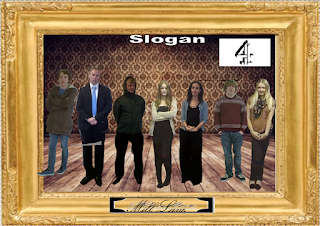I and my group have the best understanding about media theories which apply to Mill Lane. In this post I am going to speak about a selection of such theories.
‘Neale’, key leading media theorist says “Genre is a set of expectations.” By selecting the soap opera genre we must deliver expectations for the audience which is associated to this genre. But before we could deliver these expectations we had to recognise/perceive this genre to our audience. We did this through paradigms and conventions of the soap opera genre. Iconography was also used constantly throughout, such as the location of the pub. We allocated themes in our trailer which is recognised to the soap opera genre such as affairs, homosexuality and love triangles. The convention of soap opera genres is to leave the narrative open at the end of each episode (of our case the trailer). We also told multiple stories through our narrative which is part of the soap opera genre; this is known as an episodic narrative. On our group blog we showed how we applied narrative theories presented by’ Propp’ and ‘Todorov’ to our trailer. Despite our narrative being fractured during the trailer (as it skips time) it is presented in a linear pattern, which is connoted by the natural lighting change of morning to evening.
In my post called ‘What type of audience is a soap opera audience?’ I have recognised what type of audiences watch soap operas. Our trailer uses the Hypodermic Needle theory as our audience only watch soap operas for passive Uses of Gratification purposes. This allows for the audience to decoded messages preferably that we, as producers, encoded; such as the personality of Rachel Manning’s. The post listed above goes into depth about each of these theories.
We encoded these messages using semiotics, known as the study of signs. ‘Peirce’ (1931) said “We think only in signs.” “Nothing is a sign unless it is interpreted as a sign.” By this ‘Peirce’ recognises that denotations/signifiers have no meaning until audiences decode connotations encoded by producers. You could turn this theory into an equation... Signifier + Signified = Sign. The magazine Marcus Brooker reads held no information until you add a connotation to it. The magazine (the signifier) becomes a sign that Marcus is a homosexual when the audience expected this through the magazines content and Marcus’ father’s behaviour towards his son.
Hegemony is the theory that the majority have power over the minority. This theory did not apply to Mill Lanes trailer. Rachel Mannings (the minority) held power over the majority which was signified by all disturbances happening when Rachel was nearby; thus, turning this theory upside down.
We used binary opposites in our trailer as well. ‘Strauss’ believes that any effective piece of story will have binary opposites. Rachel Mannings is perceived as cruel, manipulative and came from an urban life style. Harriet Collins is Rachel’s binary opposite as she is represented as kind, caring and comes from a rural life style. Using this our audience can see the beginning of a rivalry between two powerful female characters.
We used ‘Laura Mulvey’ Male Gaze theory in our trailer to attract a greater male audience. Rachel Mannings has a pan shot from her feet to her head. This is eye candy for male audiences and gives them further reasons to watch our soap opera. The Male Gaze theory is conventionally found in nearly all forms of media, from page3 girls in newspapers to films such as 'Transformers'.
‘Jakobson’ says “There are ideologies behind every media representation’. These ideologies are stereotypes of characters, such as Rachel being from Essex means she dresses inappropriately and has poor education skills. This is a negative stereotype of our character Rachel Mannings, we wanted to make the audience dislike Rachel and to do so we followed a negative stereotype.
‘Tessa Perkins’ acknowledges that some stereotypes and not harmful, in turn are positive. However, we used no positive stereotype for any our characters, therefore representing them unfairly. However, we did this as soap opera audiences don’t want a realistic life or a show which conveys total verisimilitude. Instead they want locations to convey verisimilitude and have a cast which is out of reality, making them entertaining, hence feeding the desires for our passive audience.
























